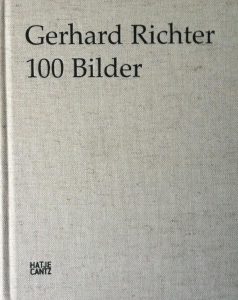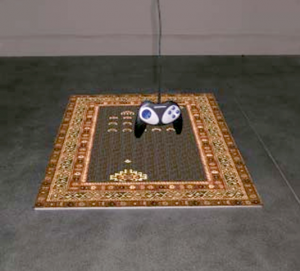1990
World population by 1990 was 5.28 billion, increased from 4.43 billion in 1980.
In ten years, 850,000,000 more people.
“There is no future for online services aimed at domestic computer users,” announced Michael Collins, the head of Prestel and Telecom Gold Business Services. (Computer News, February 1990 – Paul Needs.)
Sue Gollifer – Untitled, a colourful design, resembling folded paper, at V&A.
Ernest Edmonds – Art Creating Society exhibition, Museum of Modern Art, Oxford (UK).
Harold Cohen, The Computability of Art, Conference Proceedings, International Congress on the Philosophy of Art. Lahti, Finland.
Paul Brown – founding Creative Director, Advanced Computer Graphics Centre, Royal Melbourne Institute of Technology, Australia.
Manfed Mohr – received the Golden Nica at Ars Electronica in Linz and the Camille Graeser Prize in Zürich.
Tim Berners-Lee wrote the first web browser while employed at CERN physics lab near Geneva, Switzerland. Written for the NeXT Computer, as was the first web server.
Charles Csuri awarded Distinction Prix Ars Electronica, International Compendium of the Computer Arts for Gossip.
Artec, a UK Media Lab, founded. Funded by Islington Council, ESF (the European Social Fund) and the Arts Council England. Creative projects were led by Graham Harwood. Technology for social empowerment , combining art and technology in the cause of social integration. Influential on the net and media art scenes in the UK.
UltraPaint released for the Commodore Amiga, developed by Deneba Software, who made Canvas (1987). At first sold for $500.
Photoshop 1.0 was released by Adobe in February, initially only on Macintosh. It reached a wider audience in 1993 on Microsoft Windows. Photoshop became the industry standard in digital art, with the noun and verb (to photoshop) entering general language from its popularity.
HyperCard 2.0 released by Apple. Much improved stability and speed.
Video Toaster (VT) – Commodore’s Amiga computer. Hardware and software provided digital effects, character generation and 3D animation. First low cost video effects system similar to Quantel.
Bruce Sterling – The Difference Engine (with William Gibson). Multiple award-nominated novel, early steampunk genre. Victorian Great Britain has a steam-driven computer revolution.
Ian Burden (Human League) records solo album with Geoff Davis (Micro Arts) entitled ‘Loot’, in new all-digital studio, Sheffield. Loot song had samples from Citizen Kane and TV presenters talking about the financial crisis. Ian has successful solo career as musician with occasional album releases, most recently in 2018 with ‘Hey Ho Hum’.
ProTracker released for the Commodore Amiga. Free software for music composition and playback, that requires no additional equipment. Tracker apps using samples are still popular today.
Nintendo launch the Game Boy.
Sega Mega Drive – 16-bit fourth generation games console popular in the UK. Introduced Sonic the Hedgehog, Streets of Rage and more.
Cheetah MQ8 – standalone MIDI sequencer, low cost. Competes with recent computer-based sequencing software.
VPL Research (see 1985) files for bankruptcy.
Alvy Ray Smith creates Composer, a 32-bit imaging system with digital painting, at Pixar. Later collaborated with Microsoft on picture and photo editing software.
Nelson Mandela released from prison in South Africa.
Channel Tunnel drilling breakthrough.
Stewart Home announced an Art Strike between 1990 and 1993 using propaganda and psychic warfare (in written form with some performances) aimed at usurping the entire art world not only art galleries (such as the ICA and V&A in London, and the BBC which were staging his performances).
Banksy appeared as a freehand graffiti artist in 1990 to 1994, Bristol (UK). Later becomes very successful.
Some further events
1991
The first web browser was released from CERN to other research organisations and then to the public in August 1991.
Blacksburg Electronic Village (BEV) was the earliest example of a ‘digital public sphere’, an online community linking the entire town of 70,000 people. It was a project of Virginia Tech research university (Virginia Polytechnic Institute and State University) in 1991 and launched in 1993. In 1998 the town was selected by Guinness World Records as the planet’s ‘Most Wired Community.’
Stephen Bell awarded a PhD for 1991 thesis “Participatory Art and Computers” in which he used his ‘Smallworld‘ suite of programs as a case study. Directed by Ernest Edmonds, supervised by the constructivist artist Susan Tebby.
Kenneth Snelson, ‘Forest Devils’ MoonNight’, (USA) an artwork using modelling and ray tracing rendering.
Ken Feingold, celebrated video artist, produces first computer-controlled work The Surprising Spiral, an interactive video installation.
Alesis Digital Audio Tape (ADAT) – magnetic tape format used for the recording of eight digital audio tracks onto the same S-VHS tape used in consumer VCRs. See DAT 1987.
TrueType fonts released with the launch of Mac System 7 in May.
Digidesign release Pro Tools, a Mac-based system that integrates multitrack digital audio recording, editing, DSP and onscreen digital mixing.
Frank Gehry – 3-D form of computer art is shown in buildings like the Guggenheim Museum in Bilbao (1991-97).
Zaha Hadid – early work – Vitra Fire Station in Weil am Rhein, Germany (group project with others Tadao Ando, Nicholas Grimshaw, Alvaro Siza, main architect Frank Gehry, 1991–93).
Soviet Parliament dissolves the USSR.
1992
Carolina Cruz-Neira – computer engineer and researcher, pioneer of virtual reality (VR) invented the CAVE automatic virtual environment, with Daniel J. Sandin and Thomas A. DeFanti. She worked with the Cray X-MP supercomputer (see 1982) at the end of the 1980s.
Evolutionary Art and Computers (Academic Press Inc.) – book by Stephen Todd and William Latham.
Paul Brown Infinite Permutations V1.
Creamware Audio was a manufacturer of DSP-based sound cards and software synthesizers in Siegburg Germany. Alternative to Pro-Tools hardware with software instruments, but had no sequencer. Now called SonicCore. Famous users Hans Zimmer and N.E.R.D.
Lawnmower Man – early ‘cyberpunk’ movie starring Pierce Brosnan. Original screenplay entitled “CyberGod” but takes its the title from a 1975 short story by Stephen King. The computer-generated imagery (CGI) was created for the film by Angel Studios, London (UK). The supervising sound editor was Frank Serafine, who was hired as a result of his sound work in the 1982 film Tron. He won an Oscar in 1990 for his work on The Hunt for Red October starring Sean Connery.
Algorists – Jean-Pierre Hebert co-founded the Algorists in 1995 with Roman Verostko, for algorithmic art.
Mondo 2000 review book published, with a wealth of information about virtual reality and other topics such as ‘techno-erotic paganism’, and a chapter on hypertext where the Project Xanadu is discussed.
Snow Crash SF cyberpunk novel by American writer Neal Stephenson.
Goldie – a successful graffiti artist in the 1980s (UK, US), was involved in drum and bass/jungle music releases from 1991 (with 4Hero, Ajax Project), releases track ‘Terminator’ (1992) using the iconic name Metalheads. Other names include Rufige Kru. Popular and influential album Timeless released in 1995. Worked with Bjork and others. Later receives MBE (2016) for services to music and young people.
1993
Alternate Reality Game (ARG) – First ARG game ‘Ong’s Hat’ started 1993. Ong’s Hat (a real place of one hut, but named after a Mr. Ong’s hat in a tree) was the first example of alternative or secret history conspiracy theories created as a piece of collaborative fiction (transmedia storytelling) for the internet.
ARG was the first true web art form (also called net art, new media, etc.) as it relies on the two main web activities: searching and sharing information. Used to construct a ‘real’ story from live websites, phone numbers, clues and puzzles, generating considerable interest from the players/protagonists, controllers by real ‘puppermasters’. Known as TINAG (This Is Not A Game) gaming. Related to ‘breaking the third (or fourth) wall’ in theatre.
Ong’s Hat was followed by a marketing ARG called Webrunner: The Hidden Agenda (1996) to promote a game Netrunner.
See also Philip Price’s Alternate Reality (AR) games (1985, 1988).
Now unfashionable due to enormous excess of SEO tricks (‘gaming’ the search engine rankings) and ‘fake news’ on the internet.
The first hypernovel, (for HTML) ‘Ambulance. An Electronic Novel’ by Monica Moran was published and set the style for other online or disk multimedia stories.
1995
Algorists – Jean-Pierre Hebert co-founded the Algorists, with F. Kenton Musgrave and Roman Verostko, to produce algorithmic art. Musgrave was called by Mandlebrot ‘the first fractal-based artist’. See Mandlebrot 1980.
Digital Artist vs. Computer Artist
In the 1990s artists using computer technology adopt the term Digital Artist, losing the clunky old-fashioned word ‘computer’.
“Such was the stigma attached to computers that artists, such as Paul Brown, have used the expression “kiss of death” to describe the act of using computers in art,” (Taylor 2008).
1996
Gerhard Richter – 100 Abstract Pictures

Published as a book of photographs, these abstract works were created by putting paint between glass plates and squashing to give random abstract pictures. They were created from 1995 to 1996.
Published on the occasion of an exhibition of the artist’s paintings at the Carré d’Art in Nîmes in 1996, and was edited by Hans-Ulrich Obrist and included essays (in English) by Birgit Pelzer and Guy Tosatto. Published by Cantz Verlag, Ostfildern. 1996. Designed by Gerhard Richter and Gabriele Sabolewski.
The book has been republished in 2023 with texts generated using AI Machine Learning – “text formations that were generated at random”.
2002

Carpet Invaders by Janek Simon – an interactive installation first shown Cracow, Poland. The computer game sprites are projected down onto a 19th century prayer carpet. The game is a clone of Space Invaders. Patterns found on the carpet were almost identical to original graphics in the game. The “computer game representing the capitalist leisure industry mixed together with traditional motifs of a 19th Century Caucasian prayer rug.” Game play was possible with a console, complete with bleepy sounds. So an 8-bit art installation and game art.
